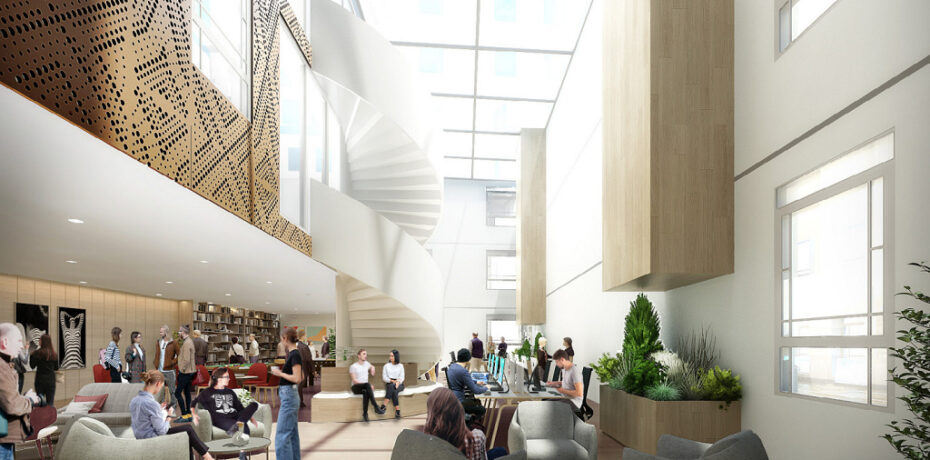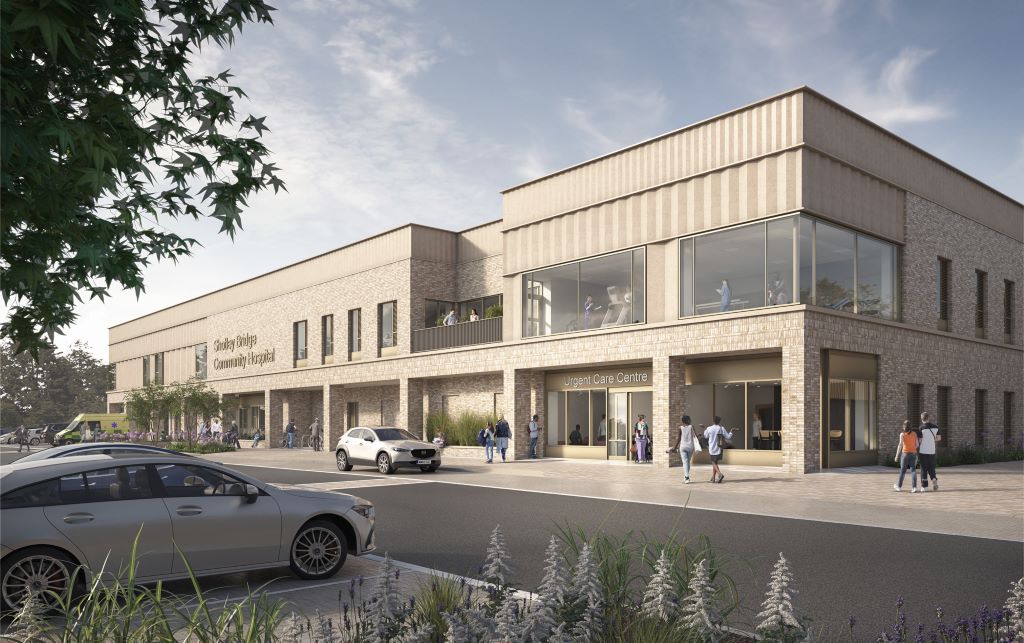The Subplot
The Subplot | Labour, Leeds, and co-living
Welcome to The Subplot, your regular slice of commentary on the business and property market from across the North of England and North Wales.
THIS WEEK
- Labour and co-living: something to think about following Sir Keir Starmer’s conference speech
- Elevator pitch: your weekly rundown of who and what is going up, and who is heading the other way
KEIR WE GO?
Labour town halls have minds of their own
Post-conference excitement about a Labour government is one thing. Labour town halls might be another: Labour-run Leeds’s struggle with co-living is worth noting.
The property industry was way more cheered by Keir Starmer’s Labour conference speech this week than it was by last week’s self-detonating Network North plan from Conservative PM Rishi Sunak. Starmer promised to boost housebuilding, reform Green Belt policy, and revive New Towns. Three cheers for three pledges.
But how sure can the industry be that Labour will follow through with reforming the planning system, particularly when the cheering dies down and unpopular decisions have to be made? Starmer said on Radio 4 yesterday that he wouldn’t allow local opposition or his own MPs to stand in the way of housing growth – which sounds hopeful. Where could flashpoints be?
Grey Belt?
Starmer wants to rethink the Green Belt and let cities grow. As Subplot reported in June, this may meet sporadic resistance from Labour councillors and voters. Cratus, the public affairs consultancy, did some survey work and asked: which party is most likely to protect Green Belt? Nationwide, the answer was overwhelmingly Greens (44%), with everyone else way behind including Labour at a distant second (18%).
But in the North West and North East, the Labour Party scored unusually high (24% each, extending their lead over the third-placed Conservatives) suggesting that the North’s ruling party has a modest and real local reputation for opposing Green Belt proposals. This needs watching.
Co-living, loved by investors…
A more interesting test could be co-living, the souped-up flat-share format that build-to-rent developers want to expand. Pressure from the property industry is strong. Yesterday Cushman & Wakefield published an analysis of potential co-living hot spots, based on the growth of the 20-34 age group, the number of postgraduates, and renters’ incomes. Manchester came a strong second to London, and Leeds landed in a strong eighth place. Nowhere else in the North figured. Co-living is being built in Manchester. So how is Labour-dominated Leeds getting on with co-living?
…but not by Labour councillors
There are two live applications and one relevant decision: Watkins Jones’s for 232 co-living apartments at the former Direct Line HQ at 42 The Headrow, awaiting an officer report; KMRE Group’s plans for 11-storeys and 189 spaces at Holdforth Court off Brussels Street, out for consultation until 25 October; and Parklane Group’s plan for 71 co-living units at the former Burley Library in Headingley where a preliminary change-of-use application has been decided. The result (on 30 May) was a refusal on the grounds that the rooms (about 320 sq ft) were too small. The fact that the rooms had kitchenettes and were largely self-contained also caused upset among councillors: the logic was that if they are self-contained then it’s not proper co-living.
It stings
This probably hurt because the original application had been for even smaller rooms (250 sq ft), which emerging council guidance appeared to favour and because council officers thought that the communal space was well-designed. Officials said that if you added it all up residents each got about 400 sq ft, as required in the National Space Standards. Officers recommended approval, but Labour councillors decided it was thumbs down.
What policy?
But what must have hurt most of all is that the scheme got tangled in Leeds’ efforts to draw up a policy on co-living. Consultation on a draft policy on co-living and houses in multiple occupation ended in 2021. Since then, things got complicated. In November 2022, Labour councillors decided not to include a policy on co-living. Suddenly what looked like an open window was shut, and council officers decided that “given this change…to remove guidance [they] were of the view that [the] co-living model did not have policy support and therefore could not be accepted.”
This vehicle is reversing
By May this year, officers had a change of heart and said it was “apparent that the co-living money does need further consideration” given what’s being built in London, Manchester, and elsewhere – including (in July 2022) the Headrow proposal, about which a councillors’ panel said they needed more information before they could support the principle of co-living.
The upshot was a proposal for technical guidance on co-living, a draft of which went before councillors in April. The note of that meeting shows councillors offering little support and raising a great many objections to co-living – from the risk residents won’t get on, to size, to affordability and how old people fit in. The meeting ended with agreement that the guidance would be updated to include members’ views “where relevant”.
The sound of silence
That was six months ago, since then nothing. You won’t find the completed document on the “planning guidance” page of the council website. Subplot asked the city council for a progress report, but hadn’t heard by the time we went to print.
Bear in mind that Labour-led Liverpool has effectively put a stop to co-living without actually voting explicitly to do that, Labour-led Salford did much the same last month, and Labour Manchester’s more liberal policy is strictly conditional and time-limited. Once 4,000 units have been completed that could be the end.
Maybe Labour doesn’t want co-living to flourish because it’s pokey and socially disagreeable? This would be a view the party is entitled to take, in which case the concept is about to die a slow death. But resistance reminds the property industry that Labour Town Halls have views of their own which only a particularly strong prime minister could overcome.
UPDATE: A Leeds City Council spokesperson said: “The decision was taken in 2022, in consultation with the Development Plan Panel, to remove co-living from the scope of the Supplementary Planning Document we consulted on. It was taken into consideration that this would not have been the best vehicle to establish new policy on co-living. Instead co-living will be addressed through the upcoming Leeds Local Plan 2040, due for consultation next summer. In the interim, the council is seeking to issue guidance to developers on co-living which should be publicly available before Christmas.”
ELEVATOR PITCH
Going up, or going down? This week’s movers
Office property values continue to fall, and the volume of money going into build-to-rent heads down for yet another quarter. Do you get that sinking feeling? Doors closing, going down.
 Office values
Office values
CBRE reported on Monday that September saw another fall in UK commercial property values.
The office sector took a hit, particularly in over-valued London, down 1.2% in the month. Outside London and the South East the figure was a less awful, but still unwelcome, down 0.8%. Over time this kind of slow destruction of value can have some dramatic effects.
Last week, Swiss Life offered 86 Deansgate in Manchester for sale with a £9.6m price tag. As recently as 2014 the building changed hands for a reported £15.8m. As the deal brewed, and stories circulated, a commenter on the Place North West story wrote “Nuts!” and perhaps the price was a bit toppy. So let’s slice a couple of million off. That still leaves an almighty gap between today’s offer price and the one agreed in the not-so-distant past. Wise people hope and pray their pension isn’t in assets like this.
 BTR goes niche
BTR goes niche
Pension Insurance Corporation’s 520-unit Manchester build-to-rent scheme now has its first residents. Two towers of 20- and 25-storeys in New Vic next to Victoria Station are among a relative handful completing this year.
Happy renters are moving in as less happy investors are stepping back. UK BTR investment volumes have been falling, relentlessly, since late 2021 when international moneybags committed to an all-time and never-yet-to-be-equalled record of £2.5bn (CBRE data).
CBRE data shows a mighty drop in volumes for Q3 2023 compared to Q3 2022, down from £1bn to £323m continuing a trend from Q2, which was itself 41% down on the same period in 2022. The second quarter wasn’t bad – a revised total of £986m – but you get the idea, which is that plenty of investors pressed pause on BTR. They still love UK beds, and on average plan to double UK investment, but as Investec data released yesterday shows, they swerved heavily into student housing.
BTR’s 2021 investment burp is due to produce a similar fizzy bubble of BTR completions in 2024, as Place North West reported. That probably means more than 5,000 completions in 2024 compared to barely 1,500 this year. But what the new investment data confirms is that 2024 will be the exception, not the rule. For the rest of this decade BTR in Manchester is going to be a niche activity.
Get in touch with David Thame: [email protected]





